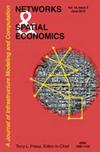The Fuel and Energy Industry of China and Russia in the Context of the Transition to the Low-Carbon Development Trajectory
IF 1.5
3区 工程技术
Q3 OPERATIONS RESEARCH & MANAGEMENT SCIENCE
引用次数: 1
Abstract
The article analyzes the issues of energy cooperation between Russia and China in connection with the ‘green transition’ in China, China reaching the peak level of emissions in 2030 and its transition to carbon neutrality by 2060. In the foreseeable future, the key area of energy cooperation between the two countries will be the gas sector, with natural gas is being considered as a ‘transitional’ fuel on the way from coal to renewable energy sources. The Chinese economy is actively moving to the use of gas in the energy and residential sectors. At the same time, considering the scale of the Chinese economy, coal will be in demand for a long time, since technological and economic reasons make it difficult to abandon this raw material quickly in favor of less carbon-intensive types of energy resources. Against this background, the Russian fuel and energy industry can avail of the contradictory trends in the energy sector of China – the existing desire for development with low-carbohydrate emissions and current significant volumes of coal generation. This creates a stable basis for the development of bilateral energy cooperation for the upcoming decades. Russia and China have different views on low-carbon development, which is dictated by the different role of energy resources in the economy of each country. China seeks self-sufficiency in supply and therefore purposefully follows the path of the ‘green transition’, while Russia proceeds from the relative duration of the era of non-renewable energy resources. For this reason, ‘green’ projects in Russia are still more related to environmental care within the framework of individual projects ‘on the ground’, and not with a systematic movement towards decarbonization of the energy industry向低碳发展轨道转型背景下的中俄燃料能源工业
文章分析了中俄能源合作中与中国“绿色转型”有关的问题,中国将在2030年达到排放峰值,并在2060年向碳中和过渡。在可预见的未来,两国能源合作的关键领域将是天然气领域,天然气被视为从煤炭向可再生能源过渡的“过渡”燃料。中国经济正在能源和住宅领域积极转向使用天然气。与此同时,考虑到中国经济的规模,煤炭的需求将持续很长一段时间,因为技术和经济原因,很难迅速放弃这种原材料,转而使用碳密集程度较低的能源。在这种背景下,俄罗斯燃料和能源行业可以利用中国能源部门的矛盾趋势——低碳水化合物排放的现有发展愿望和目前大量的煤炭发电。这为今后几十年双边能源合作的发展奠定了稳定的基础。中俄两国对低碳发展有着不同的看法,这是由能源资源在两国经济中所扮演的不同角色决定的。中国寻求供应自给自足,因此有目的地走“绿色转型”之路,而俄罗斯则从不可再生能源时代的相对持续时间出发。出于这个原因,俄罗斯的“绿色”项目仍然更多地与“实地”单个项目框架内的环境保护有关,而不是与能源工业脱碳的系统运动有关
本文章由计算机程序翻译,如有差异,请以英文原文为准。
求助全文
约1分钟内获得全文
求助全文
来源期刊

Networks & Spatial Economics
社会科学-运筹学与管理科学
CiteScore
4.00
自引率
4.20%
发文量
26
审稿时长
>12 weeks
期刊介绍:
Networks and Spatial Economics (NETS) is devoted to the mathematical and numerical study of economic activities facilitated by human infrastructure, broadly defined to include technologies pertinent to information, telecommunications, the Internet, transportation, energy storage and transmission, and water resources. Because the spatial organization of infrastructure most generally takes the form of networks, the journal encourages submissions that employ a network perspective. However, non-network continuum models are also recognized as an important tradition that has provided great insight into spatial economic phenomena; consequently, the journal welcomes with equal enthusiasm submissions based on continuum models.
The journal welcomes the full spectrum of high quality work in networks and spatial economics including theoretical studies, case studies and algorithmic investigations, as well as manuscripts that combine these aspects. Although not devoted exclusively to theoretical studies, the journal is "theory-friendly". That is, well thought out theoretical analyses of important network and spatial economic problems will be considered without bias even if they do not include case studies or numerical examples.
 求助内容:
求助内容: 应助结果提醒方式:
应助结果提醒方式:


